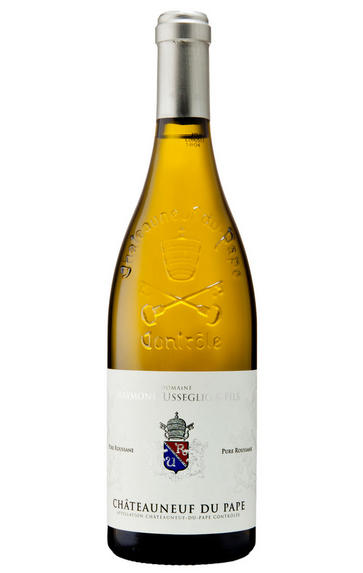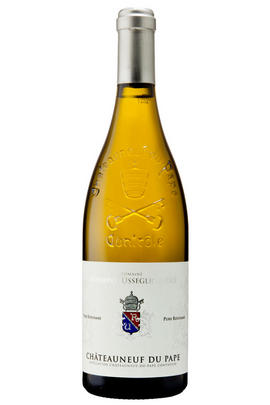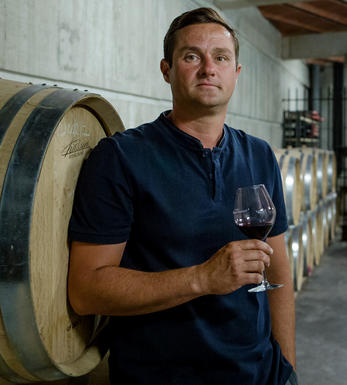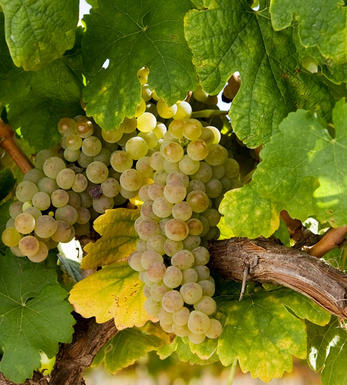
2020 Châteauneuf-du-Pape, Pure Roussane, Domaine Raymond Usseglio & Fils, Rhône

Critics reviews
Full-bodied, generous, powerful and concentrated, despite the notable oak regime the fruit is to the fore. There's a touch of dryness on the tip of the tongue from the oak, but this is bombastic and flamboyant, for lovers of a big style of white Châteauneuf. Grown on galets roulés and sand, fermented then aged for eight months in new oak barriques. 4,000 bottles made.
Drink 2023 - 2030
Matt Walls, Decanter.com (Oct 2021)
Jeb Dunnuck (February 2022)
About this WINE

Domaine Raymond Usseglio
This third-generation family domaine, of Italian origin, is today run by Raymond’s son, Stéphane Usseglio. The estate counts 24-hectares in Châteauneuf-du-Pape, all of which have been managed biodynamically since 2011. Their vineyards are divided equally between the galet-strewn parcels around Orange, the sandy soils of Courthézon and the alluvial, clay soils of the Crau plateau and the village of Bédarrides. Stéphane continues to innovate, using small, new oak barrels alongside the traditional foudres, as well as experimenting with concrete and terracotta amphorae of varying shapes and sizes. These winemaking techniques enhance the characteristics of each grape variety, carefully highlighting the particularities of each.
Stéphane’s 2021 wines are a great success, albeit 20-25% down in volume against their average yield. The wines show their trademark power and structure; but as we’ve seen with other producers, they also have lower levels of alcohol and higher acidity than the last two vintages. While this freshness makes them more approachable in youth than in some years, their structure will ensure they are nonetheless worthy of cellar ageing. They are wines to return to throughout their ageing process.

Châteauneuf-du-Pape
The most celebrated village of the Southern Rhône, Châteauneuf-du-Pape is the birthplace of the now indispensable French Appellation d’Origine Contrôlée system – imperfect though it may be. Compared to the Northern Rhône, the vineyards here are relatively flat and often feature the iconic galet pebbles – the precise benefits of which are a source of much debate. Minimum alcohol levels required by the AOC are the highest in France, but at 12.5% it is well below the natural generosity of Grenache, which only achieves its full aromatic potential when it is fully ripe and laden with the resultant high sugars. Syrah and Mourvèdre contribute the other defining elements in the blend, adding pepper, savoury spice and structure to the decadent Grenache. There are a further 10 permitted red grape varieties which can be used to adjust the “seasoning”. Of the five white varieties permitted, it is Grenache Noir’s sibling – predictably perhaps – Grenache Blanc, which dominates, though Roussanne shows a great deal of promise when handled well, notably at Château de Beaucastel.

Roussanne
Roussanne is one of the most important white grape varieties in the Rhône Valley. It is a particularly pernickety grape to cultivate being a notoriously low yielder as well as being highly susceptible to rot. It is difficult to ripen, and seemingly prone to oxidation at every opportunity. Roussanne's name comes from its russet-coloured skin and it produces richly aromatic wines, often with fruit characteristics of lime and blossom.
In the northern Rhône it is typically blended with Marsanne to produce the white wines of Hermitage, Crozes-Hermitage, St-Joseph, and St-Péray. Generally Marsanne is the dominant partner and it lends colour, body and weight to the blend, as well as richly scented fruit, while Roussanne contributes bouquet, delicacy and finesse.
It is grown less extensively in the southern Rhône although it is one of the permitted varieties in Châteauneuf-du-Pape. There are plantings of Roussanne in the Languedoc and Rousillon and in the last decade the grape have been cultivated with particular success in California, where it is produced both as a single varietal and as a component of Rhône-style blends.


Buying options
Add to wishlist
Description
These 60-year-old Roussanne vines grow on north-facing sandy plots. Aged in 100% new oak barriques, there is a notable grip of tannins alongside the natural weight of the fruit. A generous, aromatic nose of white peaches, acacia and tropical fruits is offset by a vibrant palate of agrumes, lemons, nectarines and a saline, mineral finish. Deliciously complex.
Drink now to 2030
Georgina Haacke, Wine Buyer, Berry Bros. & Rudd (Mar 2022)
wine at a glance
Delivery and quality guarantee